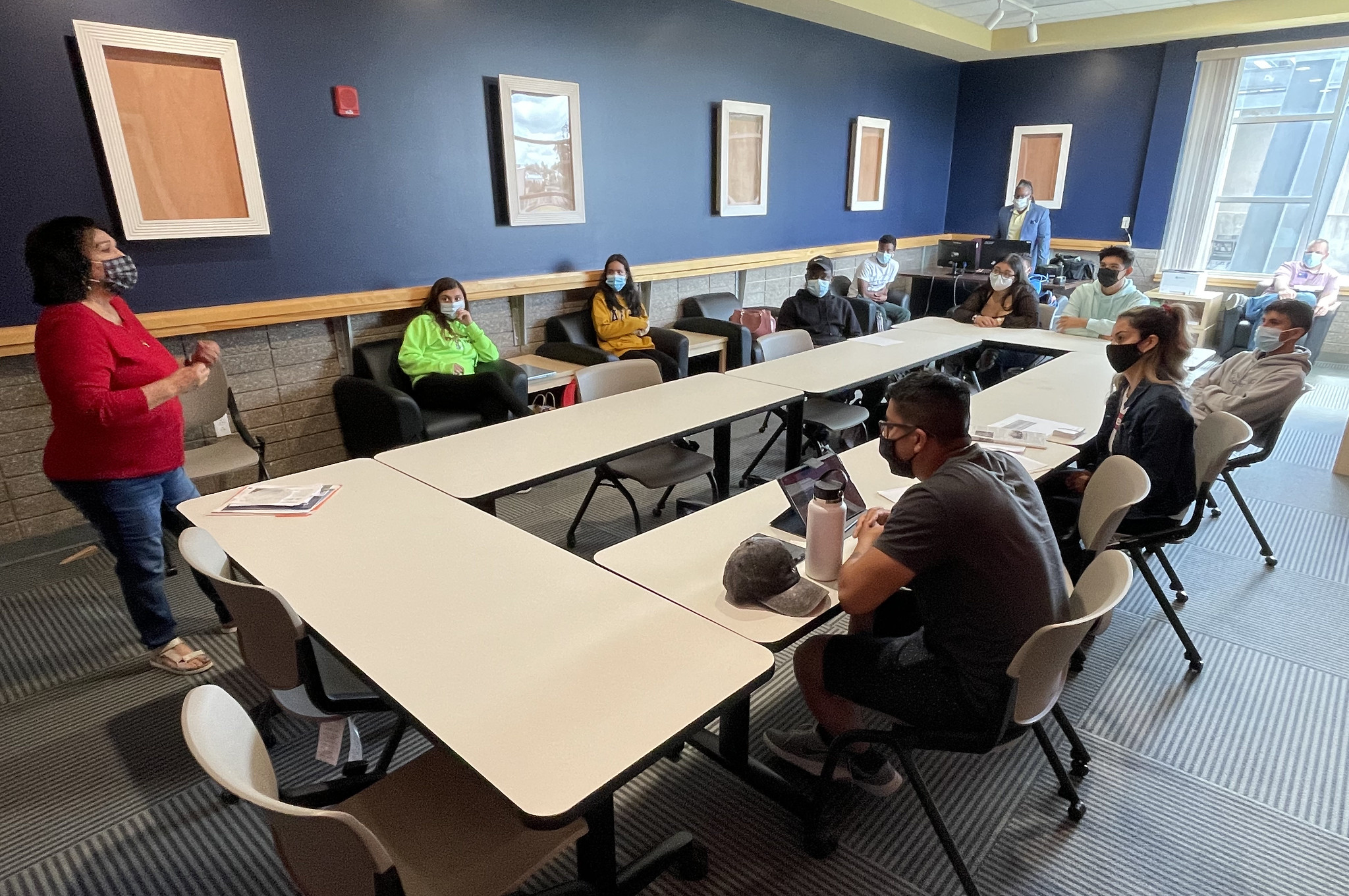GALESBURG — More than a century ago, several Mexican families came to Galesburg in search of a better life. Carl Sandburg College’s Hispanic Latino Student Association is out to make sure their contributions to the community and the struggles they encountered are not forgotten.
Looking for work in the United States during the early 1900s, many migrants were recruited to work on the railroad in Galesburg. With little to their name, these workers and their families lived in boxcars that were offered up by their employer. There were three boxcar community camps on the south end of the city, where for years the families were largely ostracized and discriminated against while faced with poor, packed living conditions.
“Those were the people that built up what Galesburg is today,” Sandburg HLSA president Selina Godina said. “We want young people like me to be aware of their contributions to Galesburg and how impactful their hard work has been.”
With that in mind, Sandburg’s HLSA now hopes to create landmarks to signify the three boxcar sites: the Davis Camp at the corner of S. West and Sixth streets, the Santa Fe Camp at the intersection of Berrien Street and Dietrich Avenue and the West Hump Camp at the corner of Knox County Highway 10 and S. Henderson Street. The organization is in the process of finding the exact location of each camp and getting permission from the landowners and city to construct site markings.
“We talked about wanting it to be a cultural footprint that celebrates and recognizes the camps and all of the things that came because of these camps,” said Anthony Law, HLSA advisor and coordinator of diversity and inclusion at Sandburg. “My students are willing to put in the work because these families have already paid their dues.”
Nearly 20 families lived in the boxcar camps, including the grandfather of Sandburg trustee Gayla Pacheco. He arrived in Galesburg in the late 1920s and worked at the old tie yard near the West Hump Camp. Pacheco, whose father also lived there for a short time, recently met with HLSA students to share with them the history of the boxcar communities. She also showed them a short video describing how the families and their descendants eventually came to be thriving, welcomed members of the Galesburg community. An hourlong documentary that aired on PBS, “Boxcar People,” also examines the struggles these families faced.
“It's good to see our youth trying to keep up the heritage and the knowledge of who we are and what we are,” Pacheco said, “not what people think we are.”
For Godina, hearing the stories of the boxcar families made her think of her father Moises’ journey to the US from Jalisco, Mexico, when he was still a teenager. He and Godina’s uncles migrated barefoot to California and worked low-wage jobs before traveling to the Midwest and settling in Monmouth.
“I know he sacrificed a lot to get to where I am today. I just want him to be aware that all his sacrifices that he went through are not forgotten,” Godina said. “That made me want to pursue this project because I want the older generations, especially the Hispanic workers that worked on the railroad, to know that their hard work and dedication are not forgotten and that we can find a way to commemorate that.”
PHOTO GALLERY: Gayla Pacheco’s “Boxcar People” presentation to Sandburg HLSA

Carl Sandburg College trustee Gayla Pacheco (left) speaks to members of Sandburg’s Hispanic Latino Student Association about the history of Galesburg’s boxcar communities of migrant families in the early 20th century. Sandburg’s HLSA hopes to create landmarks to signify the three boxcar sites.